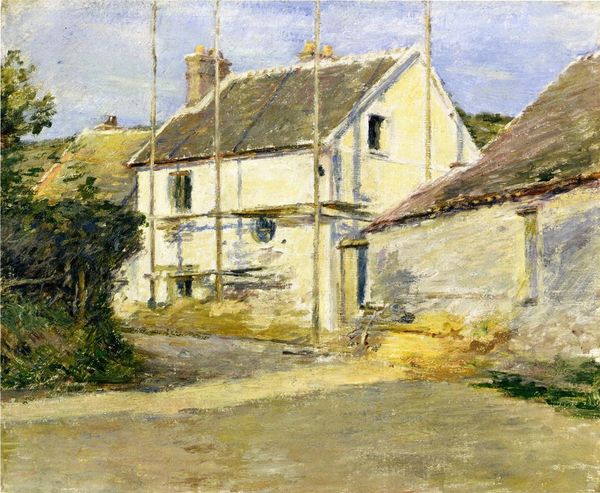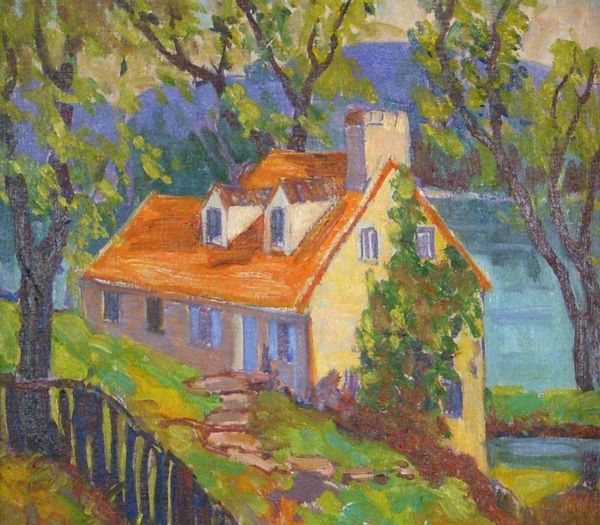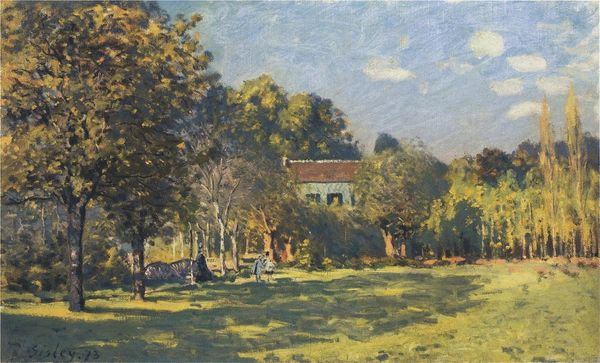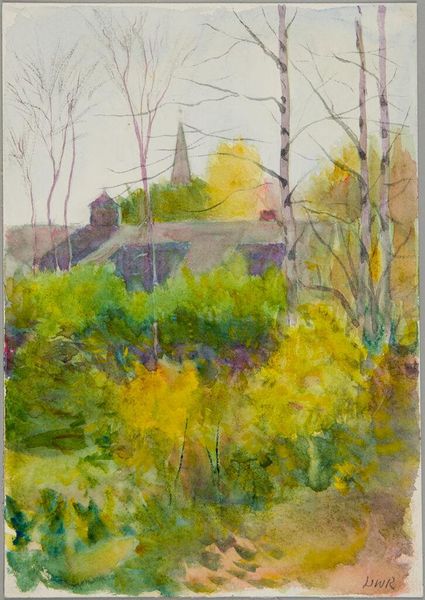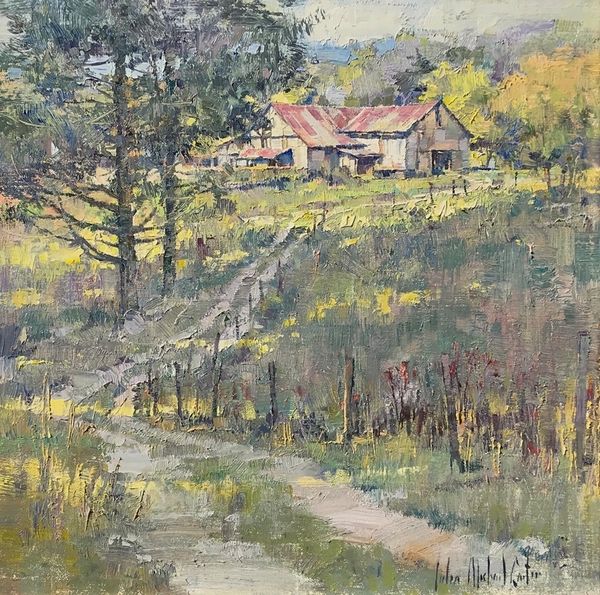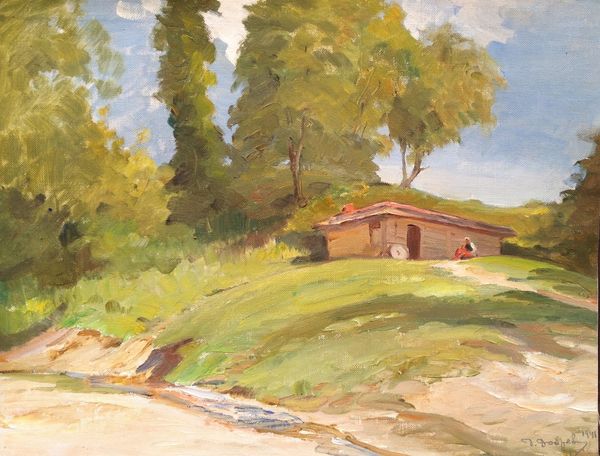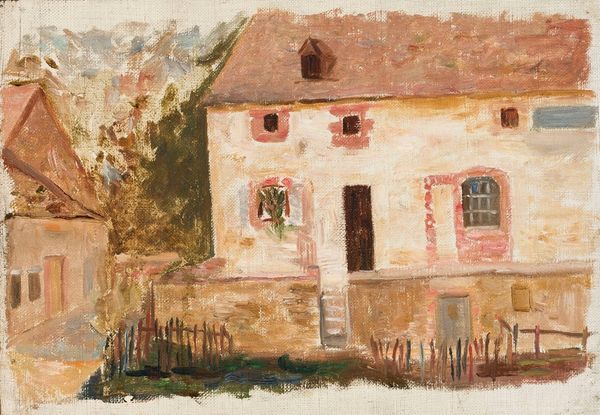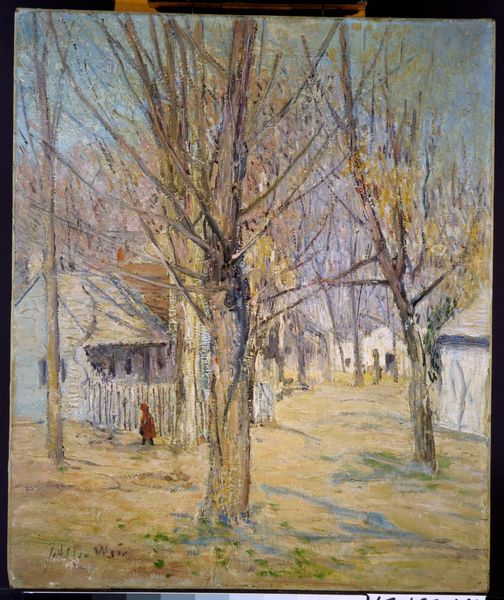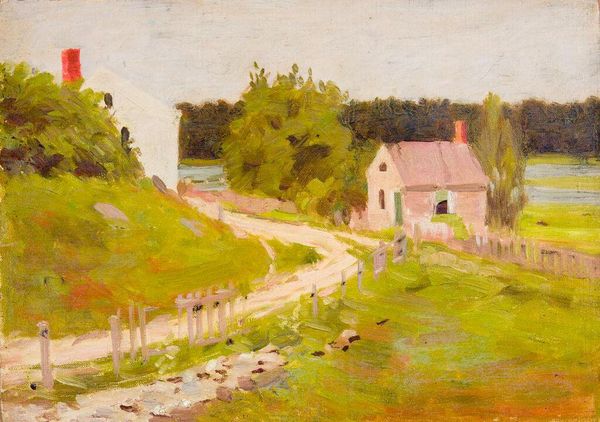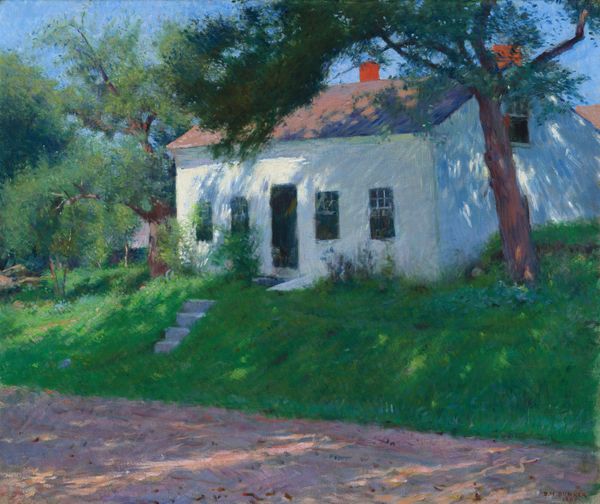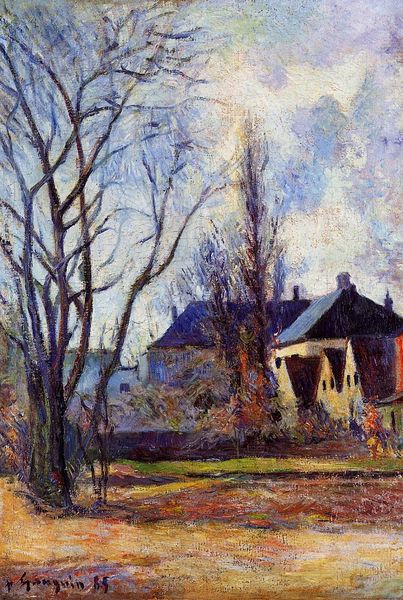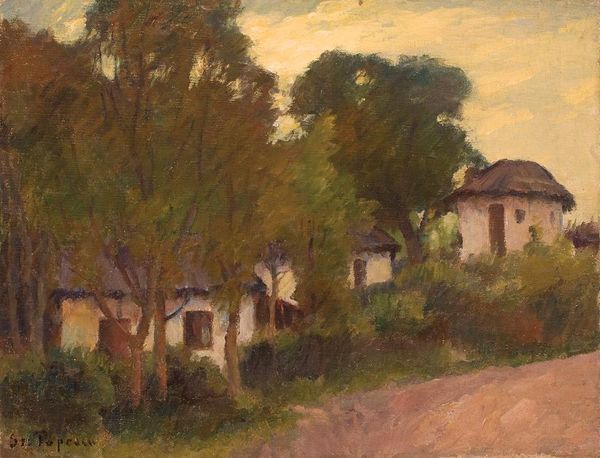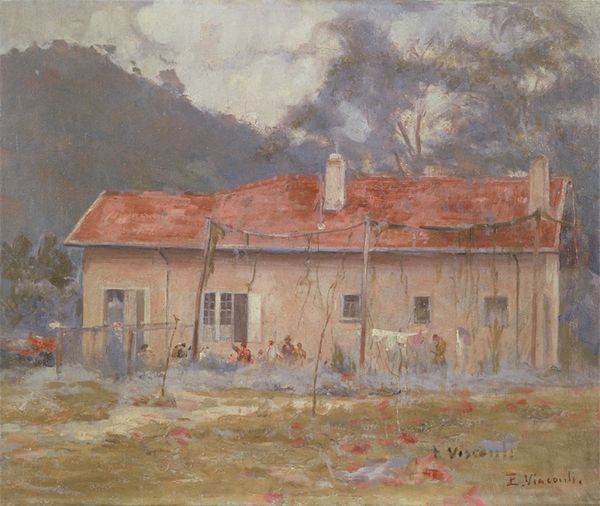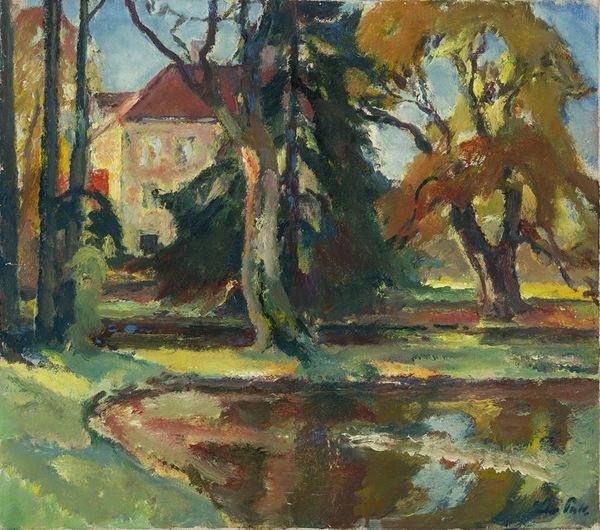
Copyright: Public domain
Editor: This is "Pennsylvania Scene," a watercolor by Thomas Pollock Anshutz, created in 1893. I'm immediately drawn to the quiet, almost melancholy mood. What do you see in this piece? Curator: Beyond its obvious appeal as a landscape, I see a commentary on the changing American landscape during the late 19th century. Anshutz was painting during a time of rapid industrialization, and these seemingly bucolic scenes often masked the realities of rural life impacted by new technologies and shifting social structures. Where do we see evidence of progress, or resistance to it, in this quiet scene? Editor: I hadn’t thought of it that way. I suppose the very simplicity – the unpaved road, the modest house – could be seen as resisting the march of progress, or at least existing outside of it. Is that a deliberate choice by Anshutz, do you think? Curator: It's hard to say definitively without more context. Anshutz's social circle included artists and thinkers grappling with these very questions. This painting might subtly reflect anxieties around the displacement of traditional ways of life, issues of labor, and access to land in the face of growing capitalism. What do you make of the angle and where it is located? Does the light draw you in? Or does it keep you out? Editor: It definitely keeps me at bay. Maybe this scene is a study of being othered in a world that is modernizing rapidly. Curator: Exactly! I find these quieter, understated pieces often offer the most compelling reflections on their time, prompting us to consider the unseen forces shaping the lives of everyday people. Editor: This has completely changed my perception of the painting! I will now wonder, with every unassuming landscape I encounter: Whose land is this? Who has access to this road, and why? Thanks.
Comments
No comments
Be the first to comment and join the conversation on the ultimate creative platform.
